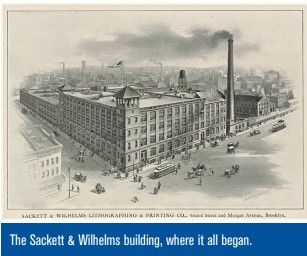I was privileged at the start of December to hear a talk presented by Dr. David Arnold, Fellow ASHRAE, past president of CIBSE and a regular attendee at ASHRAE’s annual conferences. David was giving a sneak preview of his book “20th Century Air Conditioning,” which will be published by ASHRAE later this month.
One of the fascinating facts that I discovered listening to David was that the term “air conditioning” originally referred to the conditioning of cotton by using humidified air to treat it. This means it’s not the condition of the air that is in question, but of the subject to which the air is applied. “This means you,” as the old army recruiting posters and a million passive-aggressive memes tend to say.
The precursors to air-conditioned buildings in the 19th century were large theaters and concert halls. Air was blown through ducts built into the building fabric using huge centrifugal fans. Cooling, when included, was achieved by blowing the air over blocks of ice. The ice would typically be harvested during winter from frozen lakes and rivers, stored for months in crudely insulated sheds and shipped to the city for sale for domestic and commercial use.
The cooling of people at work in offices and factories was not a priority but during their leisure time, when increased comfort could be equated to increased spending on drinks and candy, cooling was paramount.
When ventilation and cooling were applied to manufacturing facilities it was for process control, not human comfort. One of the main priorities in the dirty cities of the early 20th century was pollution control. Richard Thomas patented an air washer in 1900 and two years later Willis Carrier made improvements to the air washer that enabled the control of humidity through the apparent paradox of dehumidifying the air by bringing it into contact with more moisture. Carrier’s system was applied to the Sackett and Wilhelms printing plant, on the corner of Grand Street and Morgan Avenue in Brooklyn, during the summer of 1902 to improve print quality in humid weather.
Later that year it was installed in the New York Stock Exchange (NYSE) building to keep the traders cool. This was the first use of mechanical air conditioning for comfort cooling. The following year Frank Lloyd Wright designed the Larkin Building in Buffalo, a five storey administration block with a central atrium open to every floor and incorporating a host of modern design features. In 1906 Stuart Cramer applied the humidity control process to a yarn spinning factory having identified the optimum moisture content for the air in the spinning room and called his process “air conditioning.”
Sadly the Larkin Building was demolished in 1950 in an act of cultural vandalism that hopefully today would not be countenanced for such an architecturally significant building. The site has never been redeveloped and is now a parking lot. Of course the famous NYSE building still occupies its spot on Wall Street, but I was amazed to discover that the Sackett and Wilhelms building also still exists—even the iconic smokestack from the boilerhouse. It now houses a mix of small businesses ranging from picture framing and neon sign manufacture, to film and TV lighting hire and a street photography collective. It would be a great pity if it went the same way as the Larkin.

